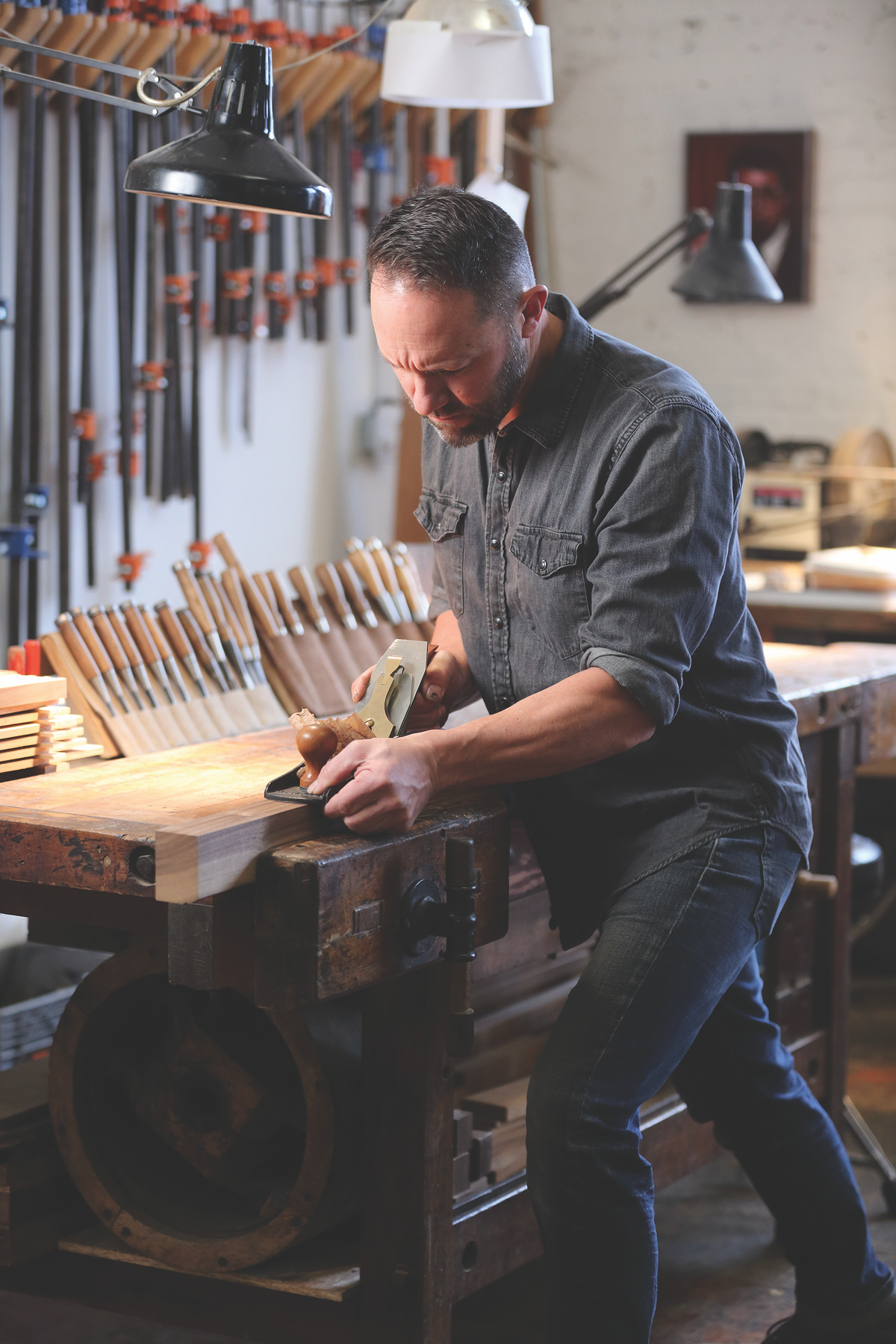This article is from the March 2019 Grand Rapids Magazine. Available on newsstands now or via subscription.
By Emily Clingman
For David Leslie, leaving his hometown of Grand Rapids in the 1990s began a 25-year journey west and back. He’s a furniture craftsman, owner of The Maker’s Bench, but that wasn’t what he set out to do intentionally.
“I had to go away to find myself,” Leslie said. “It took seeing another world out there, different cultures, even different weather, to experience self-discovery.”
Leslie, a lover of nature’s solitude and beauty, went west as a young man for some adventure. He loves canoeing and wound up in Utah. Bringing with him some carpentry experience, Leslie fortuitously found himself building a log cabin from scratch.
For the next two decades, based in Salt Lake City, Leslie developed his interest in furniture making. He valued the concept of fine craftsmanship and garnered a sophisticated following of clientele that appreciated the same. He also studied Japanese joinery and hand tool usage under master craftsman Osamu Shoji.
“With the hand tools I was studying, I first had to learn how to sharpen them properly — a method that requires much concentration, a Zen-like trance,” Leslie said. “With that, comes precision. Sharp tools, sharp mind, sharp approach — that’s where my appreciation lies.”
 Missing his family and feeling nostalgic for the city that influenced his appreciation for timeless artistry in architecture and furniture making, Leslie recently came back to Grand Rapids to stay — to immerse himself into the innovative vibrancy of the city and to add his authentic style to the unique character of Grand Rapids’ maker community.
Missing his family and feeling nostalgic for the city that influenced his appreciation for timeless artistry in architecture and furniture making, Leslie recently came back to Grand Rapids to stay — to immerse himself into the innovative vibrancy of the city and to add his authentic style to the unique character of Grand Rapids’ maker community.
Leslie, who approaches his furniture projects with a sort of mise en place mentality (his studio is impeccably organized), said he loves the process as much the finished piece.
“I work with clients who are interested in my approach, the emotions I go through in creating the piece, the wood I use — details they can share with their friends who visit,” Leslie said. “They are a part of the process, as well. They’re not just shopping out of a consumer catalog and settling on something that might work. They have specific ideas, measurements, meaningful spaces for these pieces to go. It’s also about understanding clients and picking up on their intuition and emotions, then combining theirs with mine.”
He jokes that the analytical call-and-response process for most artisans can be emotional and exhausting at times. In an instant gratification world, these elements of anguish — though gratifying for makers of fine craftsmanship — aren’t commonly appreciated nowadays. It’s the parts that can’t be measured, which people don’t see, that add value to custom work, Leslie said. These elements add an heirloom quality to his work.
“My furniture pieces are basically living with another family, perhaps for many generations,” Leslie said. “In this way, I become part of their family and that’s what’s ultimately rewarding to me.”
Photos: By Johnny Quirin








Facebook Comments